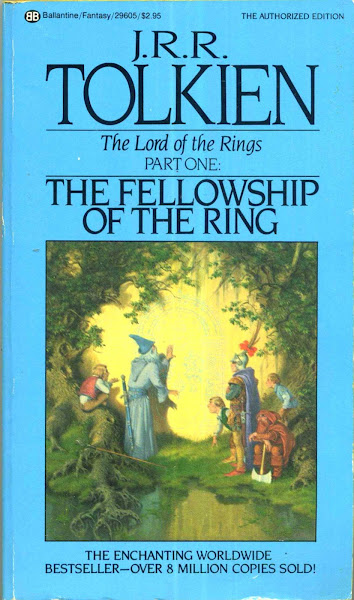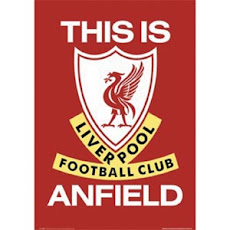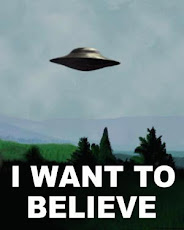(This appears in my July 28, 2008 Monday column in the Business Mirror.)
The Thin Red (and Blue) Line
by rick olivares
The foot of Chino Roces Bridge offers a remarkable if not revealing dichotomy of the history of this place. There are the ever-present barbed wire barricades meant to keep out a seemingly never-ending horde of protesters who have taken issue with almost everything under the sun. During the rumble years of the NCAA, it was like the Maginot Line; it was meant to prevent rival schools from unwanted intrusions. Yet conversely, the bridge was designed not to keep the people in but to send them to and fro. The road sign at the foot of the bridge confirms this: Avenida and Divisoria to the south, Sta. Mesa and Makati to the east, and the US Embassy to the west. Again there’s the dichotomy -- if the demonstrators were kept away from Malacañang Palace’s doorstep, there was always that long-accused edifice of imperialism along Roxas Boulevard where they could vent their lung power. But the bridge is there to send off the graduates of the schools of the area to supposedly greener pastures.
Next to Malacañang, the words of the prophets lie inside those Benedictine walls of San Beda College. There is pride in here – you can feel it as soon as you step in. There too, is a rich history written with the names and deeds of famous alumni on its sanctified halls, in its literature, and in its awe-inspiring trophy room where the one and only Crispulo Zamora Trophy stands as the centerpiece.
Should you sift through the trophies or even The Bedan, you will see how intertwined this school’s history is with an erstwhile foe that has long since left the U-belt for the sprawling lawn of Loyola.
The early Ateneo-UP rivalry dissipated when the latter left to form the UAAP with UST and NU. As the Blue and Whites took control of the cage crowns, the Red and Whites (teams were then called by their colors) announced their arrival by matching Ateneo every step of the way and it was a white hot rivalry.
As it was written by a Bedan sportswriter in 1946, “One very commendable feature about these Ateneo-San Beda games is that despite the intense rivalry, the games are very clean. The Ateneans are good sports. For them last Sunday’s double header must have been a hard one to drop. We know what that feels like. But there was no whimper or complaint. They have shown that they can win and lose.”
A couple of decades after that was written, that statement would have been untrue for it was the increasing violence that bedeviled not just between the two schools but also the league that saw both bolting the NCAA. 
After an Ateneo win, one player was allegedly have said, “The Lion is not dead. It only has been tamed with the Eagle riding majestically on its back.” When San Beda turned the tables on its foe, the reply was just as telling: “The Lion was seen walking regally chewing the last bits of eagle flesh in its massive jaws with blue feathers flying in the sunbeams.”
The two schools interchanged their own three-peats in the 1930’s and later got in each other’s way time and again en route to more glory. Ateneo was stopped by San Beda in its attempted three-peats in 1955, 1959, and 1978 while the former returned the favor only once in 1953.
 There was drama in the rivalry. The Red Lions’ very own Bonnie Carbonell and Lito Bangoy were from Ateneo De Davao and were earmarked for Loyola until a run in with a Jesuit who wasn’t too enamored with the attention that athletes got. And the two made the Loyolans pay for the snub in a grand way. They took the ’52, ’53, and ’55 cage crowns with the latter culminating with the awarding of the Zamora Trophy.
There was drama in the rivalry. The Red Lions’ very own Bonnie Carbonell and Lito Bangoy were from Ateneo De Davao and were earmarked for Loyola until a run in with a Jesuit who wasn’t too enamored with the attention that athletes got. And the two made the Loyolans pay for the snub in a grand way. They took the ’52, ’53, and ’55 cage crowns with the latter culminating with the awarding of the Zamora Trophy.
Before the ascension of Loyzaga as the Golden Age of Philippine basketball’s star, there were the feats of Ateneo’s Luis “Moro” Lorenzo. During the game’s infancy in the country, Lorenzo’s 33 points in one tussle were deemed to be an unbreakable and unattainable record until Loyzaga arrived. And as San Beda romped through the field seemingly unbeatable in the big matches, the giant-killing Blue Eagles of 1953 with Frankie Rabat, Mike Littaua, and Rusty Cacho felled the Red Lions in what many Ateneans of yesteryear call perhaps the greatest team to wear blue and white. “You don’t understand who Caloy Loyzaga was,” venerated Ateneo Sports Hall-of-Famer Ding Camua who played in Ateneo’s ’61 champion team and is currently the Manager for Pharex’s PBL team. “He was a cut about everyone else. He was like a god yet we showed his mortality that year.”
Philippine basketball’s star, there were the feats of Ateneo’s Luis “Moro” Lorenzo. During the game’s infancy in the country, Lorenzo’s 33 points in one tussle were deemed to be an unbreakable and unattainable record until Loyzaga arrived. And as San Beda romped through the field seemingly unbeatable in the big matches, the giant-killing Blue Eagles of 1953 with Frankie Rabat, Mike Littaua, and Rusty Cacho felled the Red Lions in what many Ateneans of yesteryear call perhaps the greatest team to wear blue and white. “You don’t understand who Caloy Loyzaga was,” venerated Ateneo Sports Hall-of-Famer Ding Camua who played in Ateneo’s ’61 champion team and is currently the Manager for Pharex’s PBL team. “He was a cut about everyone else. He was like a god yet we showed his mortality that year.” 
Upon returning home from the 1954 World Basketball Championships in Rio De Janeiro, Brazil, a contingent of Bedans met Caloy Loyzaga, Tony Genato, Pons Valdez, and Rafael Barretto at the airport. The Philippines placed third in the competition and the National Team returned to a heroes’ welcome yet the first thing Loyzaga asked his Red Lions’ teammate Carbonell was, “So tell me, how did you lose the (1954 NCAA) championship to Ateneo?”
“My friend,” greeted Carbonell as he clasped hands with then dubbed ‘the Great Difference*.’ “We were waiting for you.”
Loyzaga, third in the tournament in scoring, led the Philippines to a third place finish in the tournament, the highest an Asian team has ever reached.
The late Poch Estella went to Mendiola for primary and secondary education before he moved to Ateneo for college. There he battled first Pons Valdez then Loyzaga inside the paint. Ramon and Bobby Rius, the scions of Bedan great Arturo (whom they affectionately nicknamed “Lulli”) played for the late 1960’s Ateneo teams that ended with the title of ’69. Every time one of the Rius brothers touched the ball, they were booed mercilessly by the Bedan crowd. The sons of Caloy Loyzaga, Chito and Joey both went to Loyola for their elementary years before transferring to Mendiola. While in Ateneo Grade School, Loyzaga found himself teaming up with Steve Watson but the two would later meet as opponents in the title games of ’77 & ’78.
The exodus of the fabled Red Cubs to schools like Ateneo, La Salle, and UP would continue as San Beda floundered after its departure from the NCAA in the early 1980’s. It didn’t help when later Coach Orly Castelo began an aggressive recruiting program from the provinces and other schools that only further disenfranchised its high school players. The bleeding only stopped after its alumni decided to ensure that their players within its walls.
After the 1978 win over La Salle, it was a 30-year wait for San Beda. There were the painful and harrowing misses of 1991 and 1996. And had PCU’s Beau Belga had the presence of mind to dump the ball in the post to teammate Gabby Espinas who scored earlier on the defensively-challenged Yousif Aljamal, the waiting might have been longer. After endlessly waiting to exhale, the Araneta Coliseum exploded in song and tears. They’ve won two in a row now and are poised for a third and maybe even a fourth.
In recent years beginning with the off-season tournaments, San Beda and Ateneo have seen each other on the court once more. For today’s generation, that doesn’t mean much except that each is another foe to be conquered. But history, tradition, and bloodlines have a way of seeping into the fore. The presence of several former Red Cubs in the Ateneo varsity has not gone unnoticed either.
Already there the whispers that San Beda would like to move its athletic teams to the UAAP once it is accorded its “university” status within the next two years. And the whispers are getting louder. Should that happen then it’s almost the entire original cast of the NCAA when it was founded way back in 1924. The only missing school would be the University of Manila that is currently plying its trade in the rival NAASCU. Maybe then the UAAP should reclaim the name of “NCAA.”
Think about it, the red and white versus the blue and white. Heck, the green and white are there too.
Let’s not even speculate about the dichotomy in that.
* Loyzaga was first dubbed “the Great Difference” by the late pioneering sportscaster/writer Willie Hernandez.
Pictures: The first one with King Caloy receiving the trophy was for the 1952 title while the next two were from the 1953 championship that ADMU won.
Author's dedication: For the following gentlemen who had the ANIMO in them.
For San Beda: Caloy Loyzaga and Bonnie Carbonell. I had a chance to chat with Mr. Carbonell some time last year and it was a great yarn he had to tell. I've featured bits of that interview elsewhere. He did feel bad about not going to Ateneo, but he's more than happy about how things turned out, "God sends you where you need to go," he said.
Go San Beda Fight!
For Ateneo, the late Poch Estella and for Rusty Cacho. During the making of Fight! Fight! The Story of the Blue & White, I was able to chat with Mr Estella for about two hours. Even at his age, sickly and weak, you could see the spirit in him. He was very passionate about what he was relating all which he could remember in perfect detail. Then Ole Orbeta arrived as did Fr. James Reuter SJ. No one had a dry eye in the room then.
One Big Fight!
For those who enjoy those old yarns, go to www.ateneo.edu and check out in the search option: Post War Blues I, II & III. They're about those old Moro Lorenzo and Chole Gaston teams. I also have the story of the 1975 Blue Eagles and Blue Spikers champion teams.












No comments:
Post a Comment